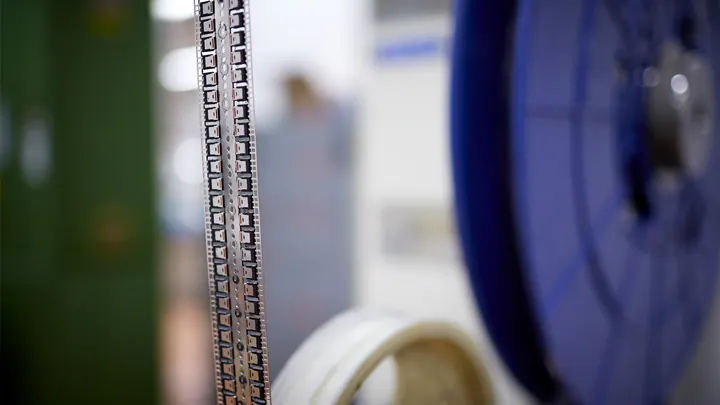 INFRA
INFRA
 INFRA
INFRA
 INFRA
INFRA
NXP Semiconductors NV today debuted a new chip family, the MCX L series, for powering industrial devices such as factory sensors.
Netherlands-based NXP is primarily known as a supplier of vehicle processors. Its silicon is used for a variety of tasks ranging from engine management to downloading over-the-air software updates. NXP is also active in a number of other markets including the industrial sector, where it sells chips, sensors and motors for robots.
The new MCX L chip series expands the company’s industrial hardware portfolio. It’s geared toward battery-powered devices such as production line sensors and utilities’ smart meters. According to NXP, the MCX L series uses three times less power than its previous-generation silicon.
There are two MCX L products on launch: the MCX L14x and MCX L25x. They’re not processors but rather microcontrollers. A microcontroller is a chip that performs a narrower set of computing tasks than a standard processor, consumes less electricity and powers a connected device.
The entry-level MCX L14x features a single central processing unit core based on Arm Holdings plc’s Cortex-M33 design. It has a maximum clock speed of 48 megahertz. Standard processors’ clock speed is measured in gigahertz, a unit of measurement that corresponds to 1,000 megahertz.
NXP’s other new chip, the MCX L25x, has a Cortex-M33 core with double the maximum clock speed of the MCX L14x. It also includes a second CPU core based on Arm’s Cortex-M0 design, the most power-efficient CPU offered by the British firm. The Cortex-M0 has a surface area of less than a 100th of a square millimeter.
When installed in a smart sensor, the MCX L25x uses its second core as a low-power, always-on module for processing sensory readings. To save energy, the chip has no fewer than seven sleep modes. In the most power-efficient of those modes, the MCX L25x uses less than one tenth the electricity it consumes when actively processing data.
The MCX L25x’s two CPU cores are integrated with circuits optimized for cybersecurity tasks. There’s a module for encrypting and decrypting data, as well as an implementation of Arm’s TrustZone technology. The latter feature can isolate sensitive application code and encryption keys from the other workloads running on a chip to lower the risk of cyberattacks.
According to NXP, the MCX L series’ logic circuits are supported by up to 512 kilobyte of flash and a 128-kilobyte SRAM cache. SRAM is a type of RAM that is considerably faster than the DRAM that computers use as main memory. DRAM cells, the basic building blocks of a memory device, have one transistor apiece, while SRAM cells include six.
“The MCX L design, architecture and operating modes make it easier for intelligent sensors to continuously acquire and process data with extremely low power,” said Charles Dachs, senior vice president and general manager of NXP’s Industrial and IoT business. “This in turn enables devices with significantly longer battery life or smaller batteries, allowing for new form factors.”
The MCX L series works with NXP’s UBX100 transceiver chip, which enables devices to wirelessly transmit the data they collect to the cloud. The company also offers several development boards. A development board is a hardware testbed that allows engineers to familiarize themselves with a new processor, write software for it and debug their code.
NXP will begin sampling the MCX L series to early customers in the coming months. General availability is slated for the second half of the year.
Support our open free content by sharing and engaging with our content and community.
Where Technology Leaders Connect, Share Intelligence & Create Opportunities
SiliconANGLE Media is a recognized leader in digital media innovation serving innovative audiences and brands, bringing together cutting-edge technology, influential content, strategic insights and real-time audience engagement. As the parent company of SiliconANGLE, theCUBE Network, theCUBE Research, CUBE365, theCUBE AI and theCUBE SuperStudios — such as those established in Silicon Valley and the New York Stock Exchange (NYSE) — SiliconANGLE Media operates at the intersection of media, technology, and AI. .
Founded by tech visionaries John Furrier and Dave Vellante, SiliconANGLE Media has built a powerful ecosystem of industry-leading digital media brands, with a reach of 15+ million elite tech professionals. The company’s new, proprietary theCUBE AI Video cloud is breaking ground in audience interaction, leveraging theCUBEai.com neural network to help technology companies make data-driven decisions and stay at the forefront of industry conversations.